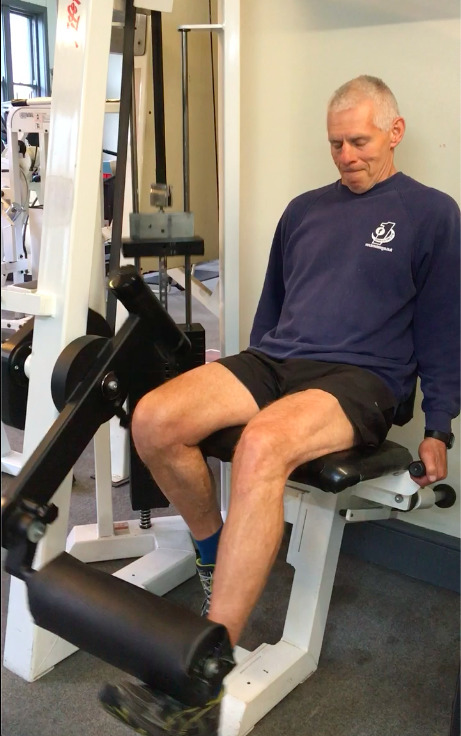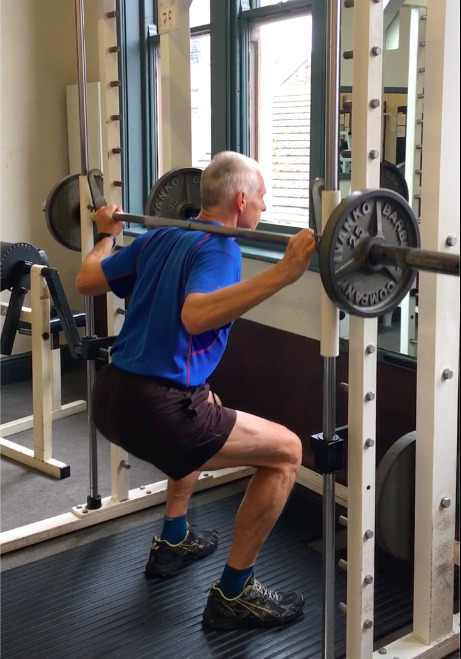Hello all. Welcome to post 49 of Strength & Conditioning For Therapists. I hope you’re well. Today we’re going to look at types of resistance exercise, specifically are compound exercises more effective than isolation exercises? I wrote a post about this just over a year ago, but I get asked this question a lot, often in the content of ‘functional training’. So I’m going to offer my thoughts on this topic again. Let’s break it down.
What is Compound Exercise?
Compound exercise typically refers to exercises that involve multiple muscle groups and joints. A good example of this is a squat; contributions from the quadriceps, glutes, hamstrings, and the calf complex are required to bring about (or control) motion at the hips knees and ankles.
What is Isolation Exercise?
Bet you can’t guess 😉 As the name suggests, resistance-based isolation exercise involve a single joint and the muscles that control it. For example, a knee extension would be an isolation for the quadriceps.
Often you’ll see people debate (or whole-heartedly refute) one of these forms of exercise over another, typically this is to the detriment of isolation exercise. For example, I’m sure you’ve heard the arguments that compound exercise is better because it’s more functional, that knee extension exercise is bad because it involves shear forces and also that it’s not functional ..?
As we’ll see I think there’s a real danger of throwing the baby out with the bathwater if we blinker our approach to just one exercise prescription, particularly within rehabilitation settings where we have additional considerations and requirements of an exercise regime over and above fitness.
Compound or Isolation Exercises For Rehabilitation?
Clearly any therapist worth their salt will say that it depends, right? I think that both compound and isolation exercises have their merits and challenges. The key is selecting the right type and combination commensurate with your treatment strategy and patent. Some of the the key considerations in making this decision include:

This isn’t an exhaustive list, however, it does highlight some of the key things to think about during exercise prescription. For example, injury status and phase of rehab might dictate that clinically it’s not appropriate at that moment to perform heavy compressive loading of a joint, as such this might restrict some of the compound exercises you’re able to prescribe. Patient experience of resistance training will also play a role; I’d suggest that 3-5 RM barbell back squats is not advised for the novice trainer for safety reasons. If the goal of the rehab programme, or that phase of rehab is to increase the strength in a particular muscle group, isolation exercises can be really effective…etc.
In my opinion, as long as you properly take account of these things you can build a rehab program that uses both types of exercises for any phase of rehab and for most patient profiles.
Advantages of Isolation Exercises

I know a lot of people don’t like isolation exercises and Functional Training or Functional Rehab is all the rage. Functional Training has its place, don’t get me wrong, but if we blinker our approach too much, we might not get the gains in our patients that we’re hoping for.
A key advantage of isolation exercises, as I allude to above, is that you can hone your focus on a particular muscle group. With machine-based exercise especially, you can really load up that muscle group safely, which is key with novice exercisers and patients. The knee extension machine is a fantastic tool to isolate the quadriceps to build strength. As we know, high load and few repetitions are required to optimally build strength (see here on how to train strength).
Whilst a criticism of the knee extension is that it’s not very functional, in the early phases of rehab and, or, with patients that are inexperienced resistance trainers it’s a much safer alternative for strength building and can be fantastically effective. And I would certainly question what’s not functional about building knee extensor strength? Once the patient has developed adequate strength, or becomes more proficient in the gym, you can then start to think about loading in a more functional way.
Advantages of Compound Exercises

Clearly compound exercises that involve multiple joints can be performed in a more functional manner and this helps to develop inter-muscular co-ordination. These exercises can also be pretty technical and require a certain level of competency before we can start to load them up to develop strength. That doesn’t necessarily mean you have to omit them from early phase rehab. For me an additional advantage is that you can load-share between limbs. Let’s take a leg press for example in a patient with OA knee pain.
First, the leg press is a nice progression from a knee extension to then build into a squat, but with OA knee pain, closed kinetic chain strength training might provoke pain in deep flexion. So instead of using this as a strength exercise straight away, we can use it as an exercise that familiarises the person/joint to accommodate load during closed-kinetic chain positions. The non-painful limb can modulate the load taken by the painful limb during the deeper and more painful ranges of motion.
Sub-maximal compound exercises can be performed concurrently with strength training to develop technique and load tolerance.
We might also want to consider using the upper body as support too. A landmine squat alternative can also be a good progression from the above
You can play around with the depth of squat according to patient symptoms.
Compound or Isolation?
So, compound vs isolation, which is best..? Both.
We need an individualised approach to achieve the best exercise prescription to achieve the specific goals of the rehab and the patient .. and as therapists you’re tasked with factoring in pain, clinical restrictions and potentially a naivety to exercise too! If you haven’t already read the post on periodisation in rehab, I’d encourage you to take a look. Initially it can seem daunting – having a huge amount of things to rehab, hundreds of options and a demanding patient. But if you take a breath, plan ahead and periodise your approach the mist can start to lift and the hundreds of exercise options now become your tools!.
Fancy Learning More About This Topic?
Get on the list to be first to hear September’s 2021 enrolment details. 100s of therapists from all over the globe have graduated from this programme and have made radical changes to their practice – and patient outcomes. Click below to read more and get on the list.



